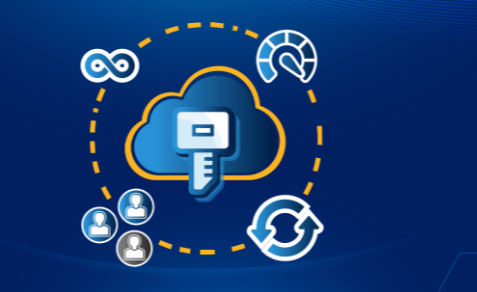Where to Buy Software Licences: Your Complete Guide
Introduction:
You’re working late, fighting through another deadline, and then it happens. You find yourself stuck on a software update, or worse, your favourite tool locks you out because your licence has expired. We’ve all been there—scrambling to find a trustworthy place to purchase software licences in a pinch.
But here’s the thing: buying software licences doesn’t have to be stressful. In fact, there are plenty of legitimate sources offering software you can trust at the right price. The trick is knowing where to look and, more importantly, what to avoid.
In this guide, I’ll walk you through your options for buying software licences—whether you’re just looking for a quick solution or need something more long-term. Spoiler alert: it’s not just about grabbing the cheapest deal.
The Quest for the Right Software Licence: A Bit Like Finding a New Pair of Shoes
Picture this: you’re shopping for the perfect pair of shoes. Some look great online, others are too expensive, and some might even come with hidden flaws. The same goes for software licences. You need something that fits your needs, isn’t overpriced, and won’t cause you headaches down the road. So, let’s walk through the most common ways to buy your software.
1. Direct from the Developer: The Trusted Route
When it comes to buying software licences, the most straightforward (and safest) option is usually to go directly to the developer’s website. This way, you’re guaranteed to get the right version, and often, you’ll also get direct access to updates, patches, and customer support. It’s like getting your shoes directly from the brand’s store.
A lot of developers offer different plans—single-user, family plans, or even business licences—so there’s a good chance you’ll find something that matches your needs. Plus, buying straight from the source means you’re less likely to deal with counterfeit software.
But be mindful—sometimes developers have deals that are only available at certain times, or their prices might not be the best. It’s always worth comparing before you hit that “buy” button.
2. Authorized Resellers: When You Need Something More Flexible
If the direct route isn’t your thing, or if you’re looking for a bit more flexibility in pricing or options, authorized resellers are the next best choice. Think of these as trusted third-party vendors who have permission from the software creators to sell their licences. The advantage here is that resellers might offer bundle deals, discounts, or even extended warranties.
The key to finding a reliable reseller is to check if they’re officially recognized by the software provider. A quick look at the provider’s site should list any approved resellers.
But remember, not all resellers are created equal. Some might offer great customer service, while others might only offer you a discount and nothing else. You want someone who can help if things go wrong. Always read reviews before you buy.
3. Online Marketplaces: Buyer Beware
Now, I know what you’re thinking: “But what about online marketplaces like eBay or Amazon? They have everything, right?” Sure, you can find software licences on these platforms, but tread carefully.
While there are some legitimate sellers here, it’s much harder to verify the authenticity of these licences. You could end up with counterfeit software, a licence that’s already been used, or even malware. And let’s face it—customer support from a random Amazon seller isn’t exactly the most reliable source when things go wrong.
If you do decide to go this route, make sure the seller is highly rated and has good reviews. But, as a rule of thumb, I’d suggest using these marketplaces only if you absolutely have to.
4. Subscription Models: The Modern Solution
Here’s where things get interesting. Software subscriptions are becoming the new norm. Think Microsoft 365, Adobe Creative Cloud, and others. These services allow you to pay a monthly or annual fee, and in return, you get continuous updates and new features.
The upside? You don’t have to worry about purchasing new licences every time a version update comes out. The downside? The cost can add up over time. It’s a bit like paying for a gym membership—you have access to all the tools you need, but you’re paying a little every month, rather than a one-time fee.
However, subscriptions are often the most practical choice for businesses or users who need the latest software versions without the hassle of upgrading each time. Plus, you can typically cancel at any time, giving you flexibility.
5. Educational Discounts: For Students and Teachers
If you’re a student, teacher, or part of an educational institution, you’re in luck! Many software providers offer significant discounts for educational use. Microsoft, Adobe, and many others have discounted plans for students, making them a great option for anyone studying or teaching.
Just be prepared to provide proof of your status. Often, you’ll need to register through a specific portal or submit a valid student ID. But if you can get past that, these discounts can make high-end software much more affordable.
6. Volume Licensing for Businesses
For businesses, volume licensing is often the way to go. This is where you purchase a bundle of licences, usually at a discount, for use across multiple users or devices. Think of it like buying shoes in bulk for your entire team—each person gets a pair, but at a better price than if you bought them individually.
The key benefit here is cost savings, but also the ability to manage everything under one account. Plus, volume licences often come with added support and flexible terms, which can be a lifesaver for businesses relying on specific software.
Read Also; Exploring the Role of Technology in Mental Health Care
How to Spot the Red Flags
Unfortunately, the world of software licensing isn’t without its scams. So how do you avoid the bad apples? Here are some quick tips:
- Check the Source: If the deal looks too good to be true, it probably is. Always check if the website is an authorized distributor.
- Beware of Too-Good-To-Be-True Discounts: If you find a software licence for a fraction of the price you’d pay elsewhere, it’s worth investigating. Counterfeit software can be difficult to spot at first, but it can cause major headaches down the line.
- Check the Licence Agreement: A legitimate licence should come with a valid serial key or digital licence file. If it’s not clear how the software is licensed, proceed with caution.
- Look for Support Options: Trustworthy vendors should offer support in case things go wrong. If they don’t, you might be dealing with a fly-by-night operation.
Conclusion: Choosing Wisely Makes All the Difference
Buying a software licence isn’t just about finding the lowest price. It’s about finding a reliable provider that gives you the right tools, at a price you can live with, and with the support you need when things go wrong. Whether you’re buying for personal use or for an entire company, the options are endless, but the choices you make will shape your experience.
So, the next time you’re searching for that perfect licence, remember: it’s not just about the software itself, but the source you’re buying it from. Make sure it’s a good fit, and just like finding the right pair of shoes, you’ll walk away happy, knowing it was worth the investment.
FAQ or Tips Block:
- Can I transfer a software licence to someone else?
It depends on the software’s terms. Many licences are non-transferable, but some allow it with specific conditions. - How do I know if a software licence is genuine?
Always buy from authorized sellers or directly from the developer. Check for authenticity marks, serial numbers, and warranty information. - Should I opt for a subscription or a one-time purchase?
Subscriptions are great for continuous updates, but if you don’t need the latest version constantly, a one-time purchase might be cheaper in the long run.






